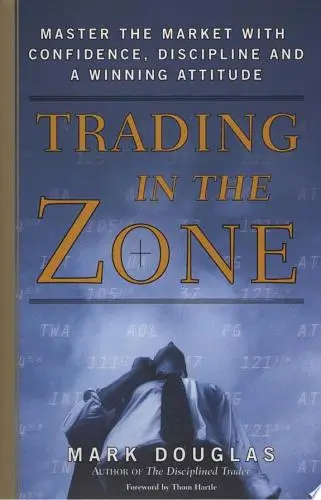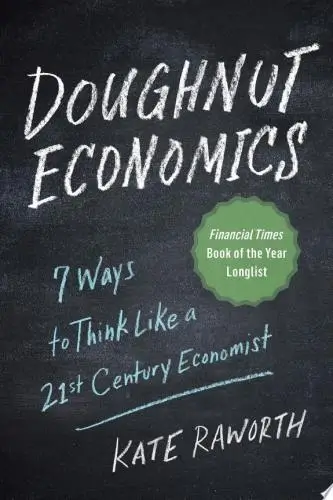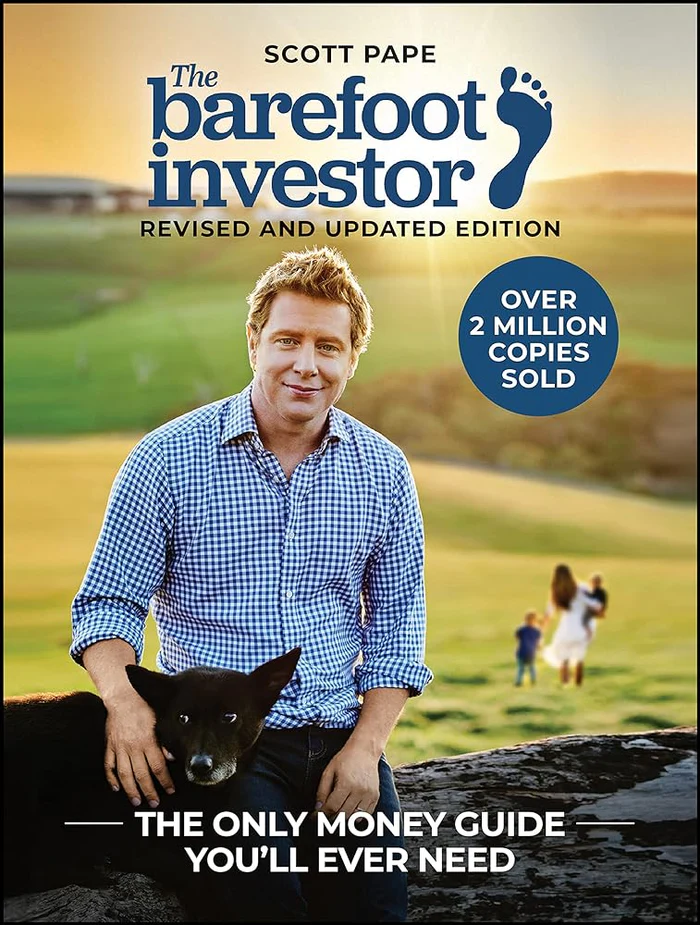The Bogleheads' Guide to Investing
What's it about?
The Bogleheads' Guide to Investing is a guide to smart investing for beginners and seasoned investors alike. Emphasizing long-term, low-cost investment strategies championed by John C. Bogle, founder of Vanguard, this book guides you through the principles of sound financial planning. You'll learn about asset allocation, diversification, and minimizing taxes, ensuring you're well-equipped to build a robust investment portfolio. Whether you're starting with small savings or looking to optimize your current investments, this guide offers invaluable insights for securing your financial future.
About the Author
Taylor Larimore, often referred to as the "Dean of the Bogleheads," is a respected author and advocate for simple, low-cost index fund investing. His works, including "The Bogleheads' Guide to Investing," emphasize practical financial wisdom, advocating for evidence-based investment strategies that prioritize long-term growth and financial security.
10 Key Ideas of The Bogleheads' Guide to Investing
Embrace the Power of Index Funds for Long-Term Wealth Building
Index funds are a cornerstone of smart investing due to their low costs and the diversification they offer.
By tracking a broad market index, these funds ensure you're invested in a wide array of companies, reducing your risk while capturing the market's overall growth.
Over time, the lower fees associated with index funds can save investors a significant amount of money, enhancing returns as compared to actively managed funds, which often fail to consistently outperform the market.
Learn DeeperStart by opening an account with a reputable brokerage firm that offers a wide selection of index funds. Look for ones with low expense ratios to maximize your returns.
Choose index funds that track broad market indexes such as the S&P 500, Total Stock Market, or international indexes. This ensures you're diversified across many sectors and companies.
Set up automatic contributions to your chosen index funds. Even small, regular investments can grow significantly over time thanks to compound interest and market growth.
Review your investment portfolio annually to ensure it aligns with your financial goals and risk tolerance. Rebalance if necessary, but remember, the goal is long-term growth, so avoid frequent trading.
- Example
If you're just starting out, you might open an account with a company like Vanguard or Fidelity, known for their low-cost index funds. You could then invest in a Vanguard S&P 500 Index Fund (VFIAX) with a minimal expense ratio, setting up a monthly automatic investment from your bank account.
- Example
For someone looking to diversify internationally, you might choose a Total International Stock Index Fund alongside a U.S. market index fund. This way, you're not only invested in U.S. companies but also in a broad range of companies across developed and emerging markets.
Start Investing Early to Leverage the Magic of Compounding
The earlier you start investing, the more you can benefit from compound interest.
This is the process where your investments earn returns, and those returns generate their own earnings over time.
Starting early gives your money more time to grow, exponentially increasing your wealth due to the compounding effect.
Even small, regular investments can grow into substantial sums over decades, highlighting the importance of beginning your investment journey as soon as possible.
Learn DeeperOpen a High-Yield Savings Account or a Retirement Account: Start by opening an account that offers compound interest. For younger investors, consider Roth IRAs or 401(k)s, especially if your employer offers a match.
Set Up Automatic Contributions: Automate your savings by setting up a direct deposit from your paycheck into your investment account. Even a small amount, like $50 per month, can grow significantly over time.
Reinvest Dividends and Interest: Instead of taking the dividends and interest out, reinvest them. This increases the amount of money that is compounding, accelerating your investment growth.
Increase Contributions Over Time: As your income grows, gradually increase the amount you're investing. Even a 1% increase per year can make a big difference in the long run.
Diversify Your Investments: Don't put all your eggs in one basket. Spread your investments across different asset classes (stocks, bonds, real estate) to reduce risk and take advantage of different growth opportunities.
- Example
If you start investing $100 a month at age 25 in a retirement account with an average annual return of 7%, you could have over $240,000 by the time you're 65. If you wait until you're 35 to start, you'd need to invest more than double that amount monthly to catch up.
- Example
Consider someone who starts investing $200 a month at age 22 in a diversified portfolio. By simply reinvesting dividends and increasing their monthly contribution by 5% each year, they could potentially grow their investment to over a million dollars by retirement.
Adopt a Long-Term Investment Horizon to Weather Market Volatility
Investing with a long-term perspective is crucial for navigating the ups and downs of the stock market.
Short-term market fluctuations can be unsettling, but history shows that the market tends to increase in value over time.
By maintaining a long-term focus, investors can avoid making impulsive decisions based on short-term market movements, which often lead to poor investment outcomes.
Staying invested through market cycles allows investors to benefit from the market's eventual recovery and growth.
Learn DeeperStart with a solid plan: Before you dive into investing, take the time to develop a clear investment strategy. This should include your financial goals, risk tolerance, and investment horizon. Remember, a well-thought-out plan is your roadmap through the ups and downs of the market.
Diversify your investments: Don't put all your eggs in one basket. Spread your investments across different asset classes (stocks, bonds, real estate, etc.) to reduce risk. Diversification can help buffer against the volatility of the stock market, ensuring that a decline in one sector doesn't devastate your entire portfolio.
Regularly contribute to your investments: Make investing a habit. By consistently adding to your investments, you take advantage of dollar-cost averaging, which can reduce the impact of volatility. This means you buy more shares when prices are low and fewer when prices are high, potentially lowering the average cost per share over time.
Avoid knee-jerk reactions to market news: Stay informed but don't let daily market fluctuations drive your investment decisions. Reacting impulsively to short-term market movements can derail your long-term investment strategy. Remember, patience and discipline are key.
Review and adjust your portfolio periodically: While it's important to maintain a long-term perspective, occasional adjustments to your portfolio may be necessary as your financial situation or goals change. However, make these adjustments based on thoughtful consideration and strategic planning, not in response to market panic.
- Example
If you're saving for retirement 30 years from now, you might decide to invest in a diversified mix of stocks and bonds. Even if the stock market dips significantly, you have time on your side for your investments to recover and grow.
- Example
Imagine you regularly invest $500 every month into a diversified index fund. During a market downturn, the value of the fund drops, allowing your $500 to buy more shares. When the market recovers, the value of these additional shares purchased at lower prices will contribute significantly to your portfolio's growth.
Diversify Your Portfolio to Spread Risk and Enhance Returns
Diversification is a key strategy to manage risk and improve the potential for returns.
By spreading investments across different asset classes (such as stocks, bonds, and real estate) and within asset classes (such as different sectors and geographies), investors can reduce the impact of poor performance in any single investment.
Diversification helps smooth out returns over time, as different investments will perform well at different times, providing a more stable overall investment experience.
Learn DeeperStart by assessing your current portfolio. Take a look at what you currently own. Do you have all your money in just one type of investment, like stocks or a single mutual fund? If so, it's time to think about spreading those investments out.
Research different asset classes. Learn about the basics of stocks, bonds, and real estate. Each has its own risk and return profile. For example, stocks are generally riskier but offer higher potential returns, while bonds are typically more stable but offer lower returns.
Consider your risk tolerance and investment goals. Are you saving for a long-term goal like retirement, or do you need your money to be more accessible? Your answers will help guide how you diversify.
Look into index funds or ETFs for easy diversification. These funds invest in a wide range of assets within a certain category, making them an easy way to diversify without having to pick individual stocks or bonds.
Regularly review and rebalance your portfolio. Over time, some investments may grow faster than others, throwing off your desired asset allocation. Periodically rebalancing your portfolio helps maintain your diversification strategy.
- Example
If you're heavily invested in tech stocks, consider adding investments in other sectors such as healthcare or consumer goods, or adding bonds or real estate investment trusts (REITs) to your portfolio.
- Example
For someone with a portfolio of individual stocks, switching to a mix of broad-market index funds or ETFs can provide instant diversification across hundreds or thousands of companies and various sectors.
Keep Investment Costs Low to Maximize Your Returns
Costs can significantly erode investment returns over time.
High expense ratios, transaction fees, and tax inefficiencies can all diminish your portfolio's growth.
By choosing low-cost index funds or ETFs, minimizing turnover to reduce transaction costs, and adopting tax-efficient investing strategies, investors can keep more of their returns.
Paying attention to costs is one of the most controllable aspects of investing, and minimizing these expenses can lead to substantially higher net returns over the long term.
Learn DeeperReview your current investments for their expense ratios and compare them with low-cost alternatives. Look for index funds or ETFs that track the same market indices but at a lower cost.
Consolidate your trading activities to minimize transaction fees. Instead of making frequent trades, plan your investment strategy to buy and hold, reducing the number of transactions and, consequently, the costs associated with them.
Implement tax-efficient investing strategies such as using Roth IRAs or 401(k)s for investments that are likely to generate high returns, thereby benefiting from tax-free or tax-deferred growth. Consider placing investments that generate taxable income, like bonds, in these accounts where possible.
Regularly monitor your portfolio to ensure it remains aligned with your investment goals while maintaining a focus on minimizing costs. This includes rebalancing your portfolio with a mindful approach to transaction costs and tax implications.
- Example
If you currently invest in a mutual fund with an expense ratio of 1%, switching to an index fund or ETF with an expense ratio of 0.1% can significantly reduce your costs. For example, on a $10,000 investment, you'd save $90 annually in expenses.
- Example
By choosing to make fewer, more strategic trades, you can reduce transaction fees. For instance, if your brokerage charges $5 per trade, consolidating what would have been five separate transactions into one can save you $20 in fees.
Deeper knowledge. Personal growth. Unlocked.
Unlock this book's key ideas and 15M+ more. Learn with quick, impactful summaries.
Read Full SummarySign up and read for free!
The Bogleheads' Guide to Investing Summary: Common Questions
"The beauty of simplification is that you can repeat the process as your knowledge and investing experience increase." - The Bogleheads' Guide to Investing
I just finished reading "The Bogleheads' Guide to Investing" by Taylor Larimore, and it was a real eye-opener. The book advocates for a long-term, passive investment strategy focused on low-cost index funds, echoing the principles of John Bogle, the founder of Vanguard. The emphasis on simplicity and low fees really stood out to me, making a compelling case for steering clear of complex investment schemes and high-cost products.
Larimore's explanations were clear and accessible, making it a valuable read for both beginners and seasoned investors. If you're looking for a practical guide to investing that emphasizes long-term wealth building and financial independence, this book is a must-read. I highly recommend it to anyone looking to take charge of their financial future.
Experience Personalized Book Summaries, Today!
Discover a new way to gain knowledge, and save time.
Sign up for our 7-day trial now.
No Credit Card Needed

Similar Books

The Art of Spending Money
Morgan Housel
Trading in the Zone
Mark Douglas
Doughnut Economics
Kate Raworth
A study guide for Barbara Ehrenreich's "Nickel and Dimed: On (Not) Getting By in America"
Gale, Cengage Learning
Bitcoin For Dummies
Prypto
Debt
David Graeber
The Barefoot Investor
Scott Pape
Money Has No Value
Samuel A. Chambers
Financial Peace
Dave Ramsey
Capital in the Twenty-First Century
Thomas PikettyTrending Summaries

Peak
Anders Ericsson
Never Split the Difference
Chris Voss
Smart Brevity
Jim VandeHei
The Psychology of Money
Morgan Housel
The First 90 Days
Michael D. Watkins
Atomic Habits
James Clear
Thinking, Fast and Slow
Daniel Kahneman
The Body Keeps the Score
Bessel van der Kolk M.D.
The Power of Regret
Daniel H. Pink
The Compound Effect
Darren HardyNew Books

The ^AOxford Handbook of Job Loss and Job Search
Ute-Christine Klehe PhD
Job Interviews For Dummies®
Joyce Lain Kennedy
Job Interviews In A Week
Alison Straw
Handbook of Career Development
Gideon Arulmani
The Art of Spending Money
Morgan Housel
$100M Offers
Alex Hormozi
A Candle for Kiri
Edna Mae Holm
Principles of Marketing, Global Edition
Gary Armstrong
Serpent Rising: The Kundalini Compendium
Neven Paar

